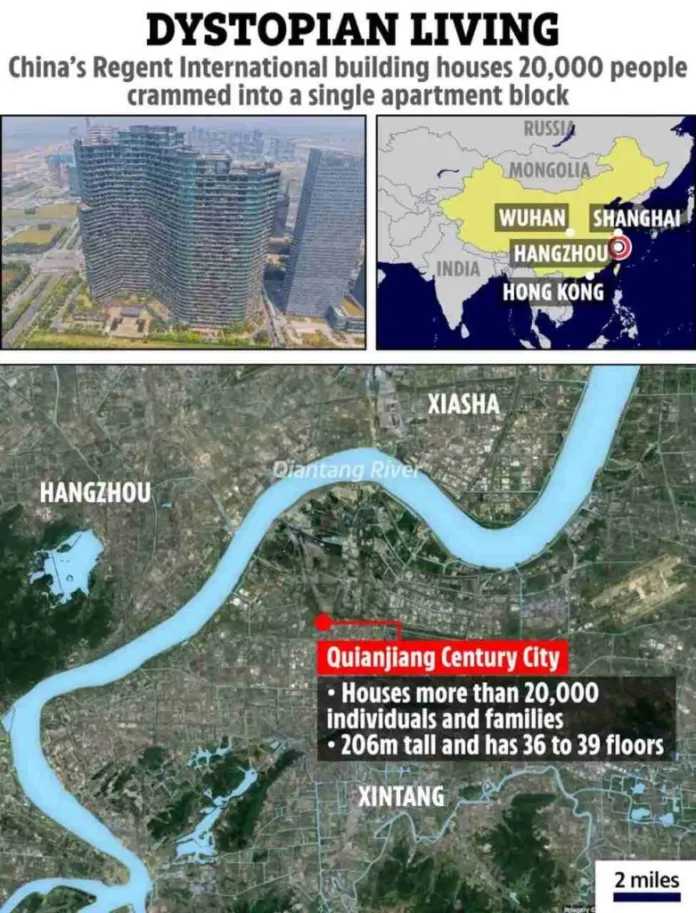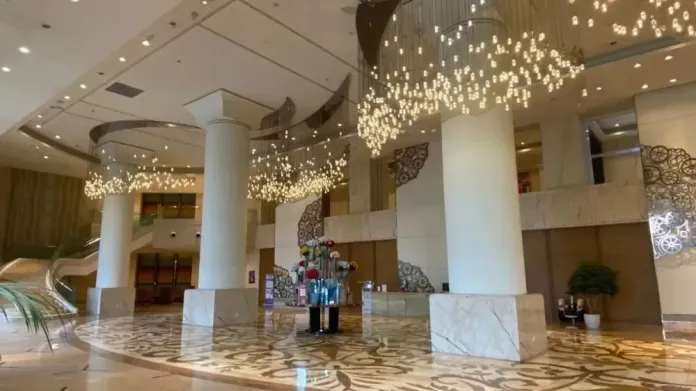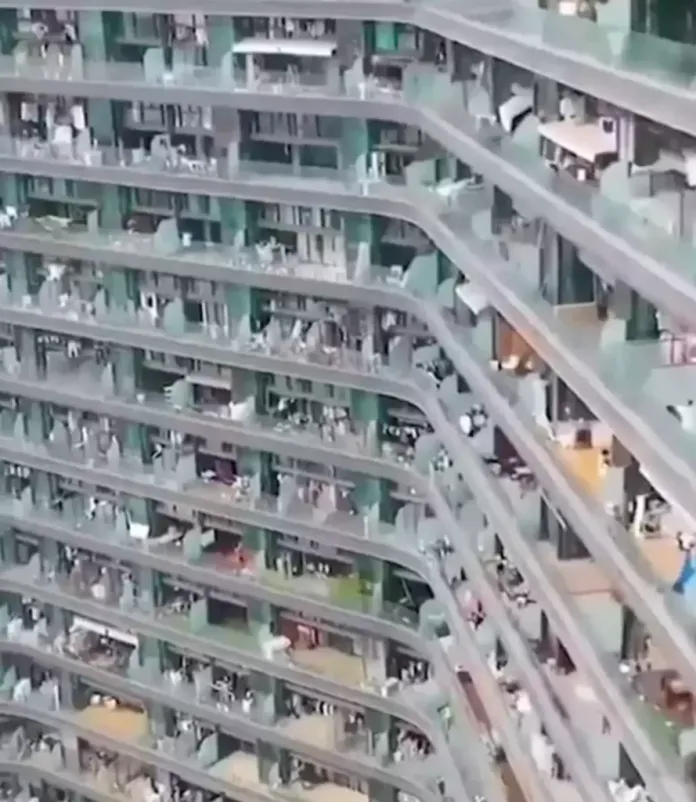A Look Inside an Apartment Block That Houses Over 20,000 Residents in a Dystopian Setting

A Look Inside the Dystopian Apartment Block Housing Over 20,000 Residents in China
In a viral TikTok video, a massive apartment building in China known as the “Dystopian Apartment” has taken the internet by storm. Filmed using a drone, the video showcases the Regent International building in Qianjiang Century City, Hangzhou. With the capability of housing up to 30,000 residents, the sheer size, unique design, and array of amenities inside the complex have stunned viewers worldwide.
But what does it really mean to live in such a colossal, densely populated structure? Is it a glimpse into a dystopian future, or simply a model of modern, cost-effective urban living? Let’s take a closer look at the building and explore its advantages and potential downsides.

The Regent International: A Dystopian Living Concept?
The Regent International building, completed in 2013, stands 675 feet tall and offers an S-shaped design, which makes it unique among high-rise buildings. It houses around 20,000 residents and spans over 36 to 39 floors, depending on which side you look at. The building’s layout and its ability to fit so many people in one place have earned it the “Dystopian Apartment” nickname, prompting discussions about the nature of such a living space.
The term “dystopian” often refers to fictional societies marked by oppressive conditions and a loss of personal freedom. While the term might evoke negative connotations, the Regent International apartment is far from a nightmare. It is a self-contained community with all the amenities needed for daily life, from restaurants, pools, and nail salons to grocery stores and internet cafes. The building is a city within a city, where residents can meet their every need without leaving its walls.

Living with Convenience and Affordability
One of the key selling points of the Regent International is its affordability. Rent for units in the building ranges from 1,500 RMB (about $200) to 4,000 RMB (around $600) per month, depending on the unit’s size. This affordability has attracted young professionals, college students, and influencers, all of whom appreciate the convenience of living in a well-equipped building with easy access to everything.
For many, this setup is ideal. The building offers a cost-effective and convenient living solution, especially for those seeking urban living in a busy city. The presence of amenities like internet cafes and grocery stores makes it a one-stop-shop for daily needs, so residents can go about their lives without ever stepping outside.
A Model for Sustainable Living
While some may view such high-density living as a “dystopian” concept, others see it as an innovative solution to the global housing crisis. The building has been hailed for its sustainability and design, offering a blueprint for how high-density urban living can reduce land usage and energy consumption. By utilizing vertical space and offering comprehensive services within the building, Regent International has been praised as a model for sustainable city living.
In fact, similar housing models are being explored worldwide. For example, Whittier, Alaska, has adopted a comparable concept with its 14-story building, where all 272 residents live in close proximity, yet still have access to services like a church, school, and police station. This trend reflects a growing interest in high-density living solutions in urban centers across the globe.

The Downsides of High-Density Living
However, not everyone is enamored with the idea of living in such a tightly packed environment. The lack of personal space is a significant downside for many people, especially in cultures like that of the U.S., where privacy and space are highly valued. Many Americans prefer homes with yards and open space where they can relax or let their pets play. In contrast, living in a building like the Regent International means limited access to fresh air, outdoor activities, and personal privacy.
This lack of open space might feel stifling for some, but it can be mitigated by choosing larger units with balconies or by spending time outside the building in nearby parks or public areas. Still, the limited physical space inside the building might be a dealbreaker for those who enjoy having more room to themselves.
Is This the Future of Urban Living?
While living in a “dystopian apartment” might not appeal to everyone, the Regent International offers a thought-provoking look at what the future of urban living might look like. It combines convenience, affordability, and sustainability in a dense living environment that could serve as a solution to the growing housing crisis in cities around the world.
As populations continue to rise and urbanization accelerates, high-density living spaces like the Regent International may become more common. Whether or not this model will be embraced by more people remains to be seen.
Would you consider living in such a place? Share your thoughts with us in the comments below.
Feel free to share this article with your friends and family to spark a conversation about the future of urban living!